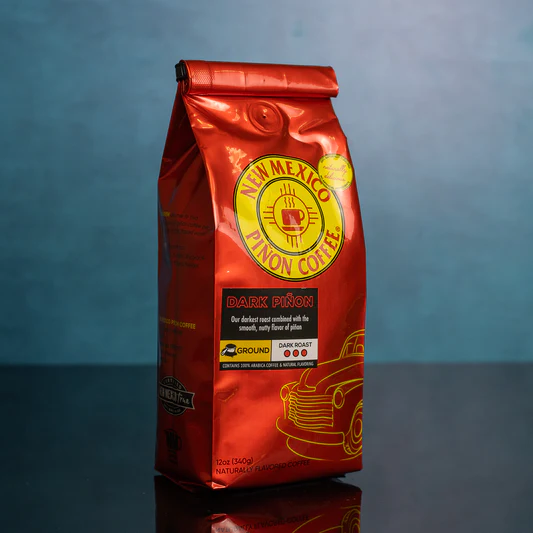Introduction
As we approach 2024, the global coffee market continues to evolve, driven by changing consumer preferences, technological advancements, and a growing emphasis on sustainability.
This article provides a detailed analysis of the coffee market, offering insights into its future trends and statistics.
The Global Coffee Market: An Overview
In 2023, the worldwide coffee market is valued at a remarkable US$88.3 billion, with an expected annual growth rate (CAGR) of 4.61% from 2023 to 2028. The United States leads in revenue generation with US$11 billion in 2023. Per capita revenue in the global coffee market is estimated at US$11.50 in 2023.
Coffee Consumption and Trends
- Volume Growth: The market is projected to show a volume growth of 2.4% in 2024.
- Per Capita Consumption: The average volume per person in the coffee market is expected to be 0.80 kg in 2023.
- Specialty Coffee Demand: There is an increasing demand for specialty coffee, with consumers seeking unique and high-quality coffee experiences.
- Brewing Methods: Alternative brewing methods like capsule coffee, AeroPress, and cold brew are gaining popularity.
Sustainability and Ethical Sourcing
- Consumer Awareness: Growing awareness about the environmental and social impact of coffee production.
- Fair Trade Practices: The rise of certifications like Rainforest Alliance and Fairtrade, ensuring social and environmental standards.

Photo by Rachel Claire from Pexels
Sales Channels and Pricing
Online Revenue and Mobile/Desktop Split
- Online Sales: The coffee market is experiencing a significant shift towards online sales, with consumers increasingly purchasing coffee through digital platforms.
- Device Preference: There is a notable split between mobile and desktop purchases, reflecting the varied consumer buying habits.
Volume and Price Per Unit
- Market Volume: The market is expected to reach a volume of 6.8 billion kg by 2028.
- Average Price: The price per unit in the coffee market varies significantly across different regions and types of coffee.
Fairtrade Revenue Share
- Fairtrade Impact: Fairtrade coffee continues to gain a larger share of the market, reflecting consumer preference for ethically sourced products.
Global Comparison
- Revenue Comparison: The United States remains the largest market for coffee, but other regions like Europe and Asia-Pacific are also showing significant growth.
Methodology and Key Market Indicators
- Data Coverage: The data encompasses B2C enterprises and is based on private household spendings on hot drinks.
- Modeling Approach: Market sizes are determined through a Top-Down approach, using resources from Statista, national statistical offices, and other relevant sources.
- Forecasts: Diverse forecasting techniques are applied based on market behavior.
Market Dynamics and Trends
The global coffee market, valued at USD 126.17 billion in 2023, is projected to reach USD 158.89 billion by 2028, growing at a CAGR of 4.72% during the forecast period. This growth is driven by several factors, including the increasing demand for certified coffee products, the popularity of single-serve coffee brew systems, and continuous innovation by leading market players.
Surge in Demand for Certified Coffee Products
- Certified Coffee Growth: The demand for certified coffee products has surged, driven by consumer awareness about manufacturing processes and sourcing.
- Sustainable Coffee: Sustainable coffee, adhering to social, environmental, and economic standards, is gaining traction. Key certifications include UTZ Certification, Fair Trade Certification, Rainforest Alliance Certification, and USDA Organic Certification.
- Counteracting Counterfeit Coffee: Certified coffee also serves as a measure against the rising issue of coffee counterfeiting.
European Market Dominance
- Coffee Consumption in Workplaces: A survey by the Institute for Scientific Information on Coffee (ISIC) revealed that 68% of respondents consume coffee while working, highlighting the high demand in European countries like Germany, Italy, Spain, and the UK.
- Technological Advancements: Innovations in tabletop machines and traceability tools are enhancing the bean-to-cup experience.
- Market Leaders: Nestle's Nespresso and Keurig Green Mountain are key players in the European coffee pods and capsules market.
Competitive Landscape
The coffee market is highly competitive, with major players like Nestle, JM Smucker Company, Kraft Heinz Company, and Starbucks Coffee Company. Private-label brands are also focusing on increasing their market shares.
Recent Developments
- Innovations in Coffee Brewing: CoffeeB, a Swiss coffee brand, developed compressed coffee balls, a new type of single-serve coffee, using seaweed-based material wrappers.
- Strategic Partnerships: Reliance Brands Ltd announced a partnership with Pret a Manger to launch and grow the brand in India.
- Focus on Women Producers: FNC launched a line of coffees produced by women, offering brand differentiation.
Market Segmentation
The global coffee market is segmented by product type, distribution channel, and geography.
Product Type
- Whole-bean Coffee
- Ground Coffee
- Instant Coffee
- Coffee Pods and Capsules
Distribution Channel
- On-trade: Coffee sold directly to consumers in coffee shops, cafes, etc.
- Off-trade: Includes supermarkets/hypermarkets, convenience stores, specialist retailers, and other channels.
Geography
- North America: United States, Canada, Mexico
- Europe: Germany, United Kingdom, France, Italy, Russia, Spain
- Asia-Pacific: India, China, Australia, Japan
- South America: Brazil, Argentina
- Middle East & Africa: United Arab Emirates, South Africa
Consumer Behavior and Preferences
The coffee market is significantly influenced by evolving consumer preferences and behaviors. With the rise of health consciousness, there's an increasing demand for organic and natural coffee products.
Health-Conscious Trends
- Organic Coffee: The demand for organic coffee is expected to grow by 8.2% annually.
- Specialty Coffee: Consumers are showing a preference for specialty coffees, which are typically higher in quality and price.
Technological Advancements in Coffee Brewing
- Smart Coffee Machines: The market for smart coffee machines, which can be operated via smartphones, is growing rapidly.
- Eco-Friendly Packaging: There's a growing trend towards sustainable packaging in the coffee industry.
Impact of Global Economic Trends
- Price Fluctuations: Coffee prices are subject to fluctuations due to varying factors like climate change and political instability in producing countries.
- Supply Chain Challenges: The COVID-19 pandemic highlighted the fragility of global supply chains, impacting coffee distribution.
The Future of Coffee: Projections and Predictions
Looking ahead, the coffee market is set to undergo significant changes, driven by consumer preferences, technological advancements, and global economic trends.
Emerging Markets
- Asia-Pacific Growth: The Asia-Pacific region is projected to witness the highest growth in the coffee market.
- Latin America: Brazil and Colombia continue to be key players in the coffee industry.
Sustainability and Ethical Sourcing
- Sustainable Practices: There's a growing emphasis on sustainable farming practices and ethical sourcing.
- Carbon Footprint Reduction: Efforts to reduce the carbon footprint of coffee production are gaining momentum.
Innovations in Coffee Products
- Flavored and Functional Coffees: The market for flavored and functional coffees is expanding.
- Ready-to-Drink Coffee: The ready-to-drink (RTD) coffee segment is experiencing significant growth.
Conclusion
The coffee industry is poised for substantial growth by 2024, driven by evolving consumer preferences, technological advancements, and a focus on sustainability. The demand for organic, specialty, and sustainable coffee products is on the rise, reflecting a broader trend towards health-conscious and environmentally friendly consumption.
Technological innovations, particularly in brewing and packaging, are set to revolutionize the coffee experience. The market is also adapting to global economic trends, with emphasis on ethical sourcing and reducing the carbon footprint of coffee production.
As we look towards 2024, the coffee industry is expected to continue its trajectory of growth and innovation, offering exciting prospects for consumers and businesses alike.
FAQs
-
What is driving the growth of the coffee market?
- The growth is driven by increasing demand for certified coffee products, technological innovations, and a focus on sustainability.
-
Which region is expected to see the highest growth in the coffee market?
- The Asia-Pacific region is projected to witness the highest growth.
-
What trends are shaping consumer preferences in the coffee market?
- Trends include a shift towards organic, specialty, and sustainable coffee products.
-
How are technological advancements impacting the coffee industry?
- Innovations in brewing technology and sustainable packaging are revolutionizing the coffee experience.
-
What challenges does the coffee market face?
- Challenges include price fluctuations, supply chain issues, and the need for sustainable practices.
-
What is the projected value of the coffee market by 2024?
- The market is projected to reach USD 158.89 billion by 2024.
-
How is consumer behavior changing in the coffee market?
- Consumers are increasingly health-conscious and prefer high-quality, sustainable coffee products.
-
What role does sustainability play in the coffee industry?
- Sustainability is crucial, with a focus on ethical sourcing and reducing the carbon footprint of production.
-
Are there any new coffee products gaining popularity?
- Flavored and functional coffees, as well as ready-to-drink coffee, are gaining popularity.
-
What impact did the COVID-19 pandemic have on the coffee market?
- The pandemic highlighted the fragility of global supply chains, impacting coffee distribution and prices.












